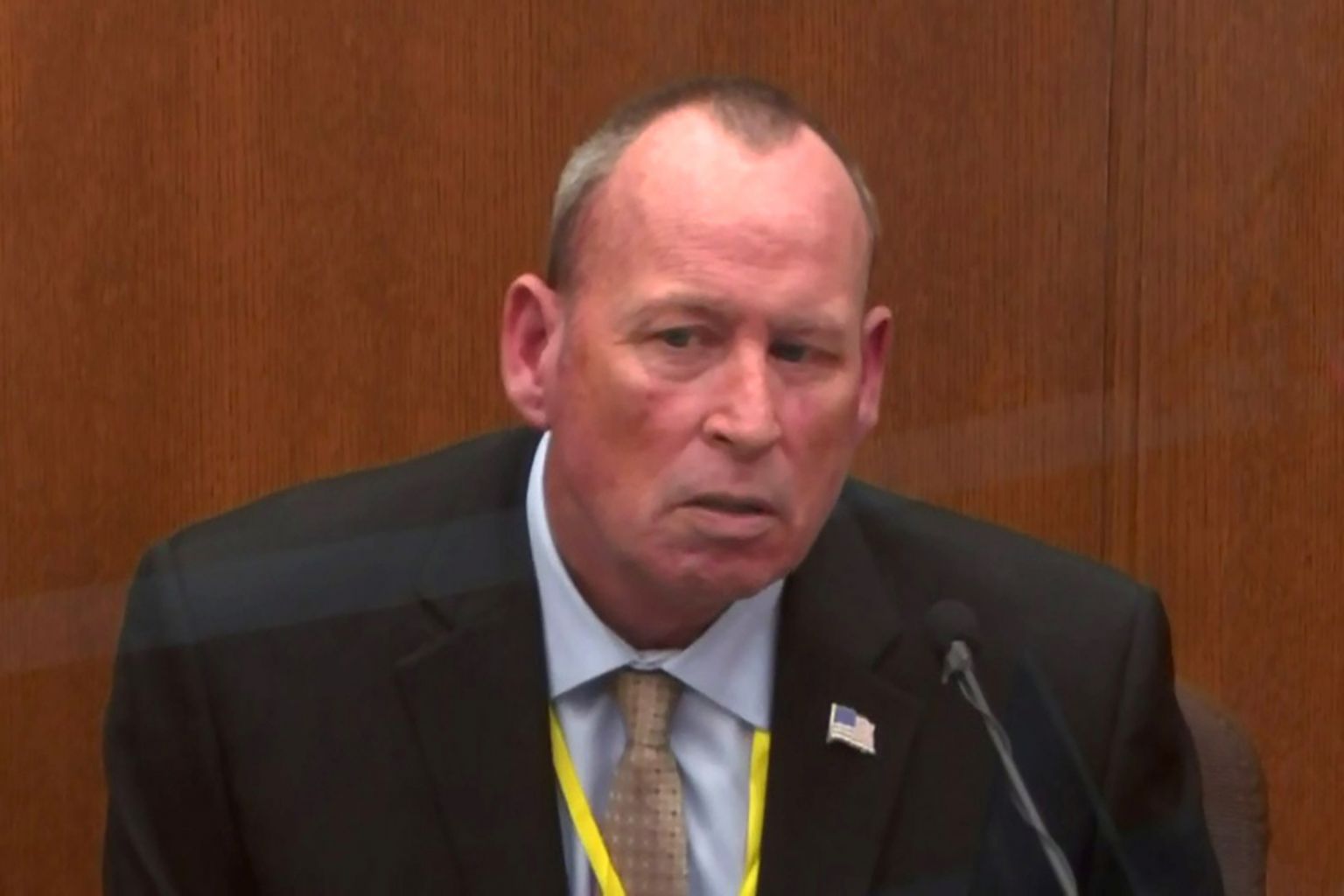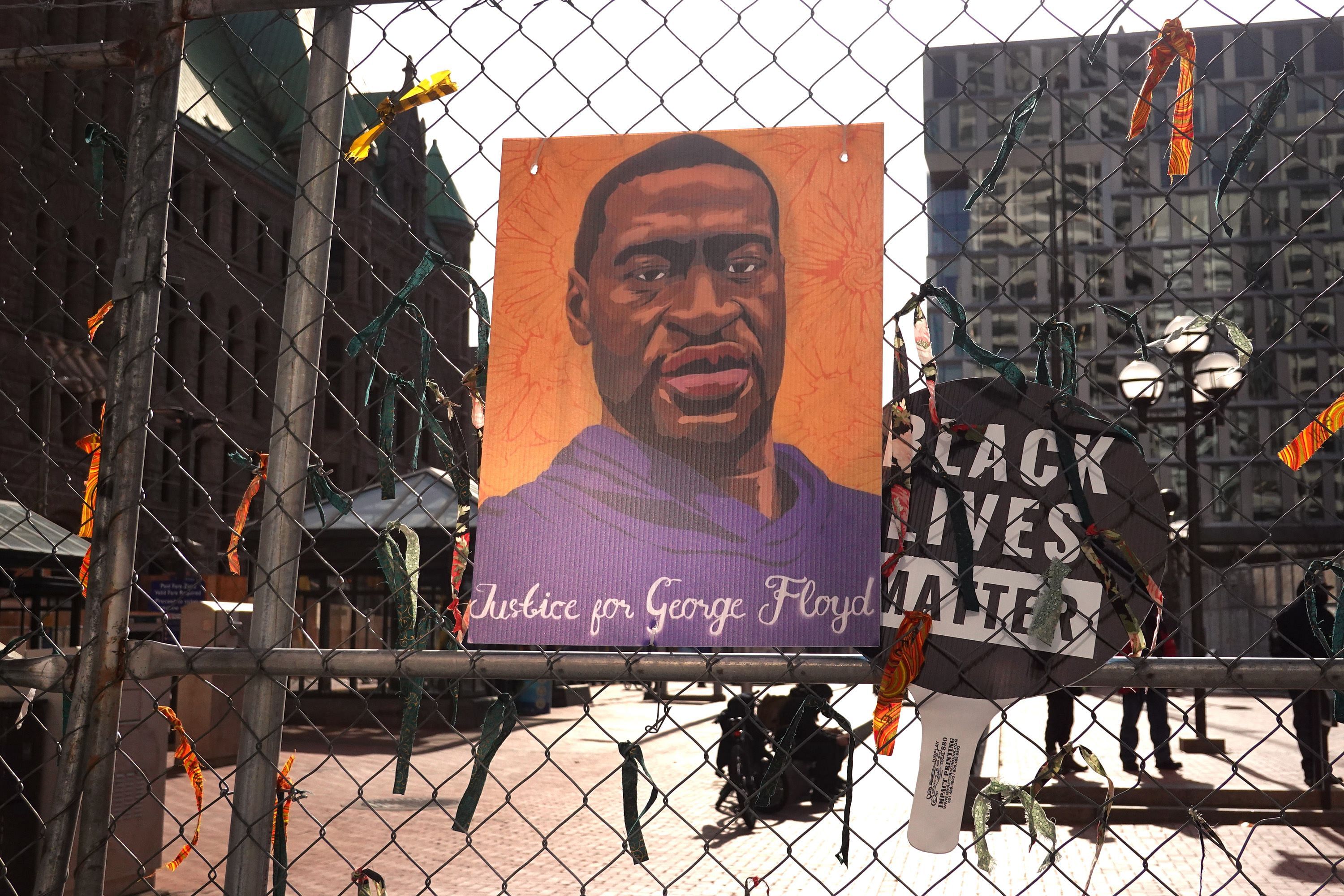Chauvin defence witnesses testify about George Floyd's opioid use
Sign up now: Get ST's newsletters delivered to your inbox

Former Minneapolis police officer Scott Creighton answers questions during the trial.
PHOTO: REUTERS
Follow topic:
MINNEAPOLIS (REUTERS) - Lawyers for Derek Chauvin on Tuesday (April 13) began presenting their case in the former Minneapolis policeman's murder trial, calling to the stand a now-retired officer who pulled over a car in which Floyd was a passenger in 2019 - a year before his deadly encounter with Chauvin.
Chauvin's lead attorney, Eric Nelson, argued in court filings that the earlier arrest supported his defence that a drug overdose may have caused Floyd's death in May 2020, not a lack of oxygen caused by Chauvin kneeling on his neck for more than nine minutes, as prosecutors charge.
Nelson showed the jury a video taken by a body-worn camera during the May 6, 2019, traffic stop in which Floyd became distressed as the officer, Scott Creighton, pointed a gun at him and ordered him out of a car.
"The passenger was unresponsive and noncompliant to my commands," Creighton told the jury on Tuesday, describing Floyd as nervous and anxious. "I then had to reach in to him because I wanted to see his hands."
Before Creighton took the stand, Judge Peter Cahill warned jurors that the evidence was being admitted for the limited purpose of showing what effects the ingestion of opioids may have had on George Floyd.
"This evidence is not to be used as evidence of the character of George Floyd," the judge said.
Chauvin, who is white, has pleaded not guilty to murder and manslaughter charges for pinning Floyd's neck to the ground in the deadly arrest on May 25, 2020. His lawyers have also argued that Chauvin was following the training he had received during his 19 years on the force.
Before testimony began on Tuesday, prosecutors rested their case after finishing some procedural matters involving video footage from one of the officers' body cameras.
Here are some important moments from the 12th day of witness testimony:
Scott Creighton, retired Minneapolis police officer
Scott Creighton, the retired Minneapolis police officer, was the first witness to take the stand for the defence.
Creighton said that Floyd repeatedly turned away from him and towards the driver as he continued to give him commands.
He testified that he drew his service weapon.
In the video, Creighton is heard saying, "Keep your hands where I can see them."
He then repeatedly ordered Floyd to keep his hands on the dashboard.
"You're not going to get beat up or nothing," Creighton said on the video to a distraught Floyd.
During cross-examination, prosecutors asked Creighton whether Floyd died during the encounter.
"No, he did not," the retired officer said.

A picture of George Floyd, whose death triggered Black Lives Matter protests around the world, hangs on a fence in Minneapolis, Minnesota.
PHOTO: AFP
Shawanda Hill, woman in the back seat of Floyd's car
Shawanda Hill - who was in Floyd's SUV with him when police arrived on May 25, 2020 - took the stand for the defence. Hill described Floyd as "happy," "normal" and "alert" when she saw him in the Cup Foods and asked him for a ride home.
Hill got into his Mercedes-Benz where she and Floyd chatted for about eight minutes before he fell asleep.
She testified that she tried to wake him a couple of times and that she was able to wake him but he nodded off again.
Hill also told jurors Floyd was asleep when clerks from the store came outside to resolve an issue with a counterfeit US$20 bill.
"I told them that I would wake him up because I didn't have money on me at the time," she said.
Floyd was asleep and startled awake when officers arrived and tapped on the window, Hill testified.
Peter Chang, Minneapolis Park police officer
Minneapolis Park Police officer Peter Chang testified for the defence that when he arrived at the scene he was told to go across the street to where Floyd's two passengers, Hill and Morries Hall, stood near his SUV.
Chang testified that he was concerned for the police officers' safety.
"There was a crowd," he told the jury. "They were very aggressive towards the officers."
Chauvin's defence has argued that bystanders who watched the incident unfold threatened the officers.
The jury then viewed footage from Chang's body camera, showing his interaction with Hill and Hall. The pair stood against a wall as Chang spoke to them while Chauvin and the other officers struggled with Floyd across the street.
"Damn, he still won't get in the car. Just sit down, dude," Hill is heard saying on the video as she watched from afar.
Chang is heard telling them not to go into the vehicle.
On cross-examination, Chang testified that when he arrived, Floyd was sitting on the curb and was not agitated. He also testified that the four officers who were with Floyd never radioed for more help.
Nicole Mackenzie, medical support coordinator
Officer Nicole Mackenzie, who trains officers on excited delirium, took the stand for the defence after she testified for the prosecution last week.
She testified that officers are trained to look for several signs that a subject is experiencing excited delirium, such as removing their clothing, speaking incoherently and appearing agitated.
Cahill told the jury that Mackenzie was brought back to the stand because Thomas Lane, one of the officers involved in the incident, is heard on video using the term.
She testified on cross-examination by prosecutors that officers are told to put subjects who may be experiencing excited delirium in a side position as they may have trouble breathing.

